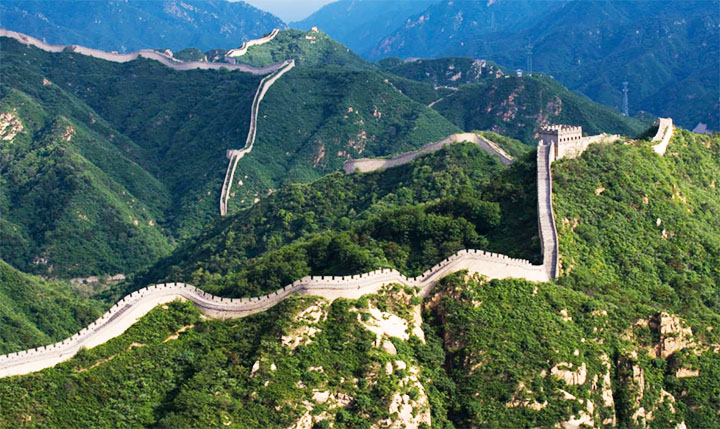There is an old Chinese saying that you are not a good man until you reach the Great Wall. The Great Wall is one of China's most famous tourist attractions and an important window into Chinese culture, so let's go and find out!
The Great Wall, also known as the Great Wall of China, was an ancient Chinese military fortification, a tall, strong and continuous wall that restricted the movement of enemy horsemen. The Great Wall is not just an isolated wall, but a defence system consisting of a wall as the main body, combined with a large number of castles, barriers, pavilions and markers.

The history of the construction of the Great Wall dates back to the Western Zhou period in ancient China, where the famous story of the "Beacon and Fire", which took place in the capital city of Haojing (now Xi'an, Shaanxi), originated. During the Spring and Autumn Period and the Warring States Period, the Great Wall was built for the first time, but the length of the wall was relatively short. After the Qin Dynasty destroyed the six kingdoms and unified the country, the First Emperor of Qin connected and repaired the Great Wall of the Warring States, which became known as the Great Wall of 10,000 miles. The Ming Dynasty was the last dynasty to repair the Great Wall, and it was at this time that most of the Great Wall was built.
The Great Wall is located in 15 provinces, autonomous regions and municipalities directly under the Central Government, including Hebei, Beijing, Tianjin, Shanxi, Shaanxi, Gansu, Inner Mongolia, Heilongjiang, Jilin, Liaoning, Shandong, Henan, Qinghai, Ningxia and Xinjiang. Among them, the length in Hebei Province is more than 2,000 kilometres, and the length in Shaanxi Province is 1,838 kilometres. According to the results of a nationwide survey of Great Wall resources by the cultural relics and mapping departments, the total length of the Ming Great Wall is 8,851.8 kilometres, and the Qin, Han and early Great Wall exceeds 10,000 kilometres, for a total length of over 21,000 kilometres. The existing Great Wall heritage proper includes various types of remains such as Great Wall walls, trenches, boundary trenches, monolithic buildings, customs forts and related facilities, totalling more than 43,000 places (blocks/sections).
On 4 March 1961, the Great Wall was declared by the State Council as the first batch of national key cultural heritage units, and in December 1987, the Great Wall was listed as a World Heritage Site. 26 November 2020, the State Administration of Cultural Heritage released the first list of important sections of the Great Wall at the national level.
The Great Wall is one of the longest and most heavily constructed ancient defence projects not only in China but also in the world, continuing to be built for more than 2,000 years since the Western Zhou Dynasty, spreading over a vast area of land in northern and central China, with a total length of more than 20,000 kilometres.
Since the First Emperor of Qin, almost every dynasty that ruled the Central Plains had to build the Great Wall. More than a dozen dynasties, including Han, Jin, Northern Wei, Eastern Wei, Western Wei, Northern Qi, Northern Zhou, Sui, Tang, Song, Liao, Jin, Yuan, Ming and Qing, all built the Great Wall on different scales. In terms of the ruling ethnic groups that built the Great Wall, in addition to the Han, many dynasties ruled by ethnic minorities also built the Great Wall, and more so than those ruled by the Han. During the Kangxi period of the Qing Dynasty, although large-scale construction of the Great Wall ceased, it was later built in isolated places, and it can be said that it has not stopped being built for more than 2,000 years since the Spring and Autumn Warring States period until the Qing Dynasty. According to historical documents, more than 20 vassal states and feudal dynasties have built the Great Wall, and if you add up the Great Wall built in various eras, there are more than 100,000 miles, among which the length of the Great Wall built in several dynasties, including the Qin, Han, Jin and Ming, exceeds 10,000 miles.
The remains of ancient Great Wall and beacon towers can be found in Xinjiang, Gansu, Ningxia, Shaanxi, Inner Mongolia, Shanxi, Hebei, Beijing, Tianjin, Liaoning, Jilin, Heilongjiang, Henan, Shandong, Hubei and Hunan provinces, cities and autonomous regions of China.